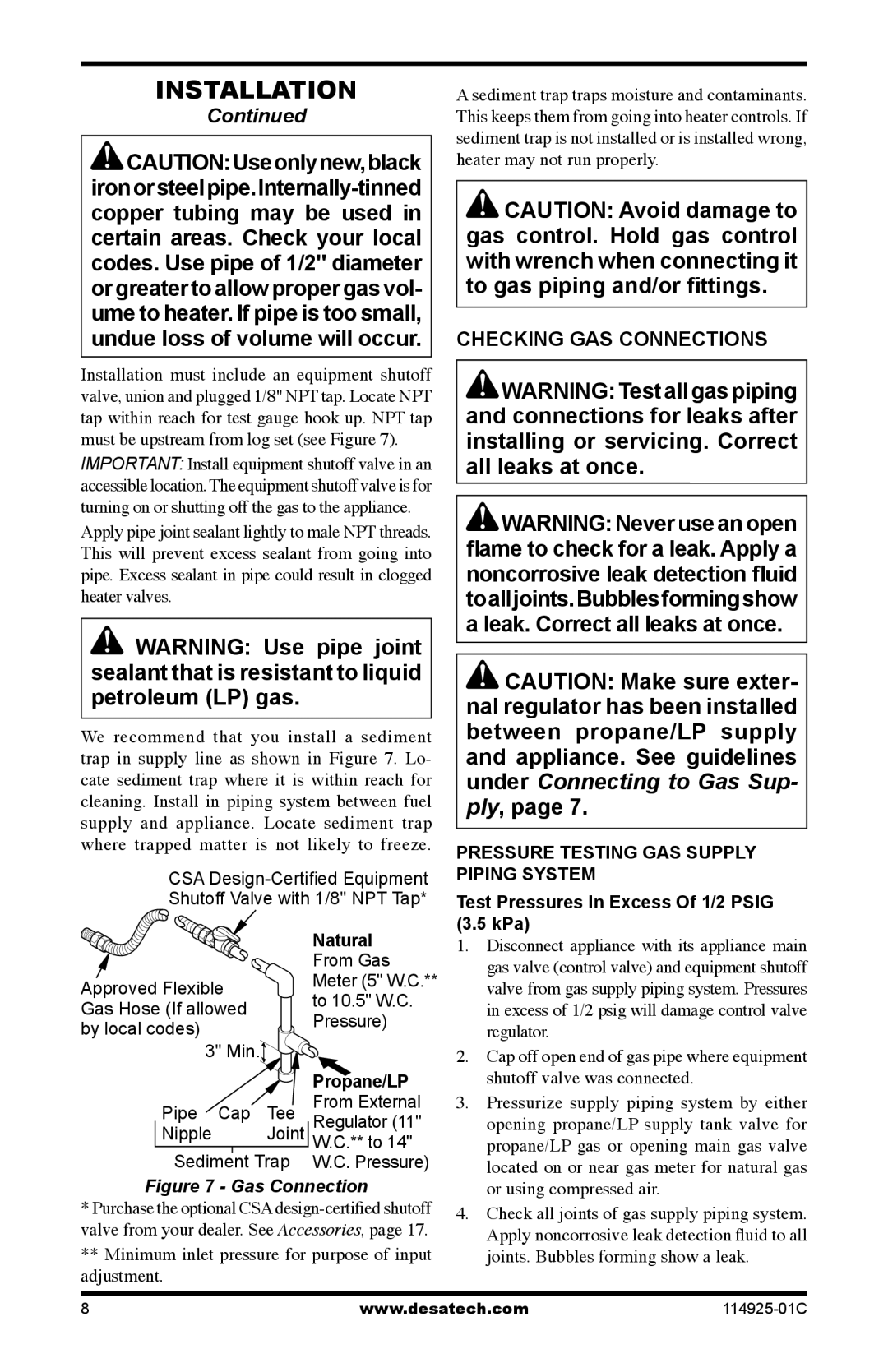MPF18VNA, MPF24VPA, MPF18VPA specifications
The Desa MPF24VPA, MPF18VPA, and MPF18VNA are innovative models designed for efficient heating solutions tailored to a variety of residential and commercial applications. These products showcase advanced technology and engineering that cater to diverse consumer needs, making them notable players in the heating equipment market.One of the defining features of the Desa MPF series is their high heating capacity. The MPF24VPA, for instance, can deliver a robust output suitable for larger spaces, while the MPF18VPA and MPF18VNA offer slightly lower capacities, making them ideal for smaller areas. This range allows consumers to choose models according to the specific requirements of their environments.
Energy efficiency is another hallmark of the Desa MPF series. These models incorporate state-of-the-art combustion technology, ensuring maximum fuel utilization and reduced emissions. With features such as automatic ignition and efficient heat exchangers, users can expect quick heat responses and consistent comfort without wasting energy, contributing to lower utility bills.
Durability and user-friendly operation are also significant characteristics of the MPF24VPA, MPF18VPA, and MPF18VNA. Constructed with high-quality materials and components, these heaters are built to withstand the rigors of regular use. Moreover, the intuitive controls make operation straightforward, allowing users to easily adjust settings to suit their needs.
Safety is always a top priority in any heating appliance, and Desa takes this aspect seriously. The MPF series includes several safety features, such as automatic shut-off in case of overheating, low oxygen sensors, and robust construction that prevents overheating and accidental damage. These precautions ensure that consumers can enjoy their heating solutions confidently.
Additionally, the MPF series features versatile installation options. The models can be configured for vented or vent-free operation, providing flexibility based on local regulations or personal preferences. Their sleek designs are also aesthetically pleasing, allowing them to blend seamlessly into various home or office environments.
In conclusion, the Desa MPF24VPA, MPF18VPA, and MPF18VNA are exemplary heating units that combine efficiency, effectiveness, and safety. With diverse features and options designed to cater to a wide audience, these models stand out as reliable choices for anyone looking for high-quality heating solutions. Whether for a cozy home or a bustling commercial space, the Desa MPF series is engineered to deliver warmth and comfort through innovative design and technology.

